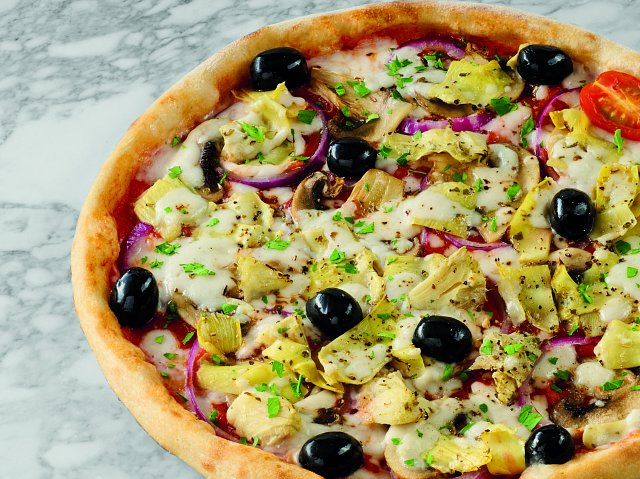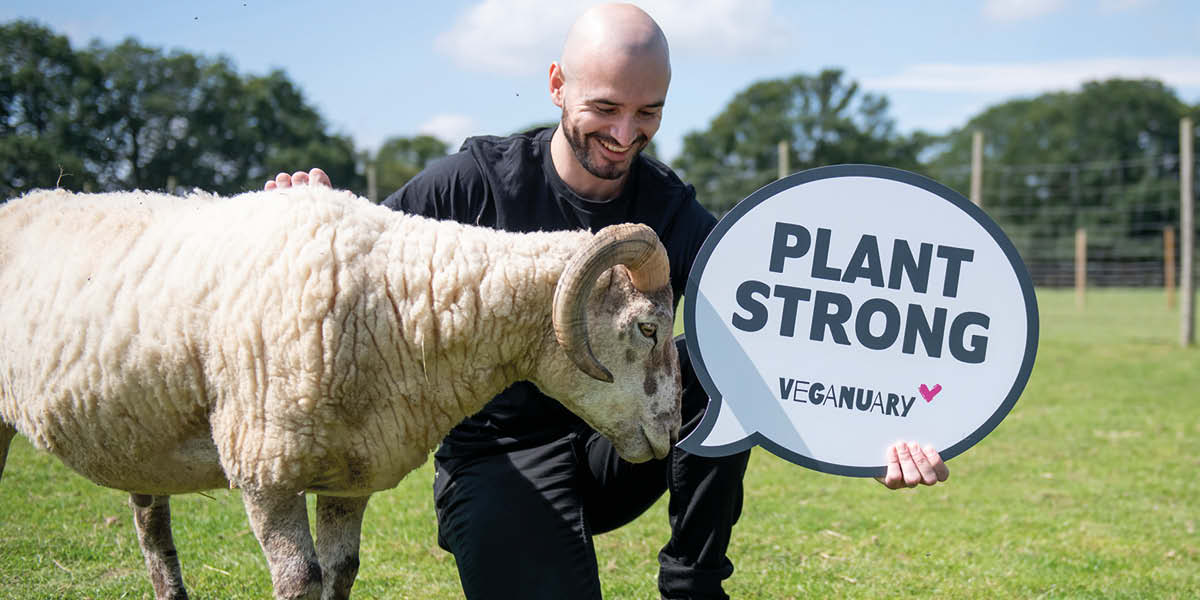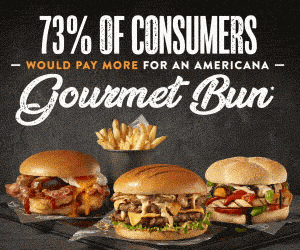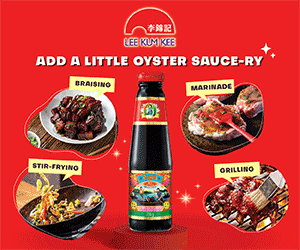Feature: Earth-grown eats

Don’t underestimate the profit potential of colourful, imaginative and top-quality vegan menu items
Price isn’t the only factor customers are increasingly conscious of today, with concerns over health and sustainability also steering their buying decisions. In fact, according to Nielsen IQ (2023), almost four in 10 people (38%) are actively replacing meat-based meals with plant-based alternatives at least once a week, so long gone are the days of the plant-based segment being seen to cater solely for vegan diners. In the words of Nina Gillsvik, global CMO for plant-based milk producer Oddlygood: “Offering plant-based options taps into a growing market, as health- and environment-conscious Gen Z increase purchase power.
“Last year, we saw 56% of Gen Z willing to substitute meat and dairy products with alternatives. This generation has been a key target audience for us at Oddlygood.”
With almost anyone and everyone curious enough to at least have a dabble in all things vegan, it’s no wonder the category is worth over £500m in the UK alone (UK Meat Substitutes Market Report). For operators who approach the market in a carefully considered way – striving to meet the ever-growing expectations of guests in terms of their ethical-, environmental- and health-related values – it presents a significant opportunity to boost their bottom line.
“Consumer demand for plant-based dishes has seen a remarkable evolution, driven by a growing awareness of health, sustainability and ethical considerations,” says Jennifer Handley brand manager for Whirl at AAK Foodservice. “The rise in dietary preferences, such as veganism and ‘flexitarianism’, reflects a significant shift in how consumers view food. This transformation is not just a trend – it’s becoming a lifestyle choice for many.”
Room for improvement
You’d think the sheer number of people shifting towards vegan diets would mean the out-of-home offer is nothing short of outstanding. But that is, unfortunately, not the case.
Veganuary 2025 is just around the corner, marking a great opportunity for restaurants to cash in on plant-based demand. This year’s initiative was by far the biggest yet, with 25 million sign-ups worldwide. But, according to data from the most recent campaign, 30% of participants found dining out to be the biggest barrier to successfully completing the challenge.
The data also revealed:
- 56% of high street restaurant chains don’t offer enough variety of plant-based starters
- 57% of high street restaurant chains don’t offer enough variety of plant-based mains
- Taste is the number one motivator for choosing a plant-based option, followed by price and then health credentials
- Cheese is the product Veganuary participants miss the most, followed by eggs and seafood
- 64% of high street restaurant chains don’t offer enough variety of plant-based desserts
For Mildreds, an iconic vegan restaurant brand with six outposts across the capital, quality and consistency have always been top priority across every meal and daypart. Having launched its first restaurant in Soho in 1988, the concept has long been lauded as one of London’s plant-based pioneers.
“Many restaurants treat their vegetarian and plant-based customers like a chore,” notes Sarah Wasserman, the group’s food and creative director. “So often, they are just given a token dish with no love in it. Chefs should embrace the challenge and draw inspiration from culinary traditions that include less or no animal products.”
On the point of puds, highlighted by the 2024 Veganuary participants, Wasserman has too often witnessed the lacklustre effort that tends to go into this particular menu section. “Don’t forget dessert!” she urges. “Think across the whole menu and put just as much effort into your plant-based offerings as you do everything else. Try to go beyond the usual chocolate mousse and opt for something a bit more exciting. Trust me – customers who are used to limited options will truly appreciate it!”
For those in need of a little inspiration when it comes to plant-based puds, Mildreds provides a wonderful example of a menu that is concise yet creatively curated. From White Chocolate Tiramisu (£8.50) to Cherry Saffron Crème Brûlée (£8), Butter Rum Sticky Toffee (£9.50), Chocolate Ganache Torte (£9.50) and Tiffin Truffles (£3.50), there’s sure to be something to suit every sweet-toothed preference among vegans and flexitarians alike.
Viva la veg
The discussion around veganism has long been underlined by real concerns around nutrient intakes, with mixed findings from scientific research fuelling the conversation. The Eatwell Guide, for example, produced by the NHS in 2020, found that many of us fail to consume nearly enough fibre and legumes. “Plant-based options can improve nutrient intakes and support a positive shift in public health, while also meeting the growing demand for healthy, sustainable and appealing food choices,” says Dr Laura Kirwan, sustainability lead at food data management software company Nutritics.
“While vegan ultra-processed foods provide a convenient and accessible entry point for consumers transitioning to a plant-based diet, they can fall short in terms of nutritional quality when compared to traditional vegan foods. While they serve a purpose, they shouldn’t overshadow the nutritional benefits of whole, minimally processed vegan foods – such as fruits, vegetables, legumes and whole grains – which can offer superior health benefits and contribute more effectively to overall wellbeing.”
Promoting a diverse diet and encouraging consumers to try new things is the best way to ensure a sufficient nutrient intake, Dr Kirwan adds. “Operators should stop pitting food groups against each other,” she advises. “Understanding consumer preference is key – while ultra-processed foods may appeal to some consumers wishing to replicate a meat or dairy experience, whole plant-based foods generally offer superior nutrition, cost-effectiveness and environmental benefits. By focusing on whole foods, smart resourcing and emissions reduction, operators can better engage with customers to meet the demand for fresh, nutritionally rich dishes.”
Restaurant teams should take advantage of this, striving to understand what their target demographic would like to see on their menus, what they are and are not willing to try and what they’re actively looking to eat day-to-day in order to make them feel good.
As Jake Schneider, CEO of Mondarella UK, suggests: “By prioritising taste, texture and inclusivity, operators can make plant-based options a standout features on their menu and win over a broader audience.
“A great menu isn’t about segregating vegan and non-vegan options – it’s about creating dishes that excite everyone,” he muses. “By focusing on flavour and quality, vegan options can hold their own alongside classic favourites, making them appealing to flexitarians and even dedicated meat-eaters.”
Plant-based perks
Elevating and expanding your vegan offerings will allow you to cater for a wider scope of dietary demands and preferences, which will naturally have a positive impact on profits. Studies have shown that, if venues are keen to encourage customers to go for more meat-free or plant-based dishes, they should look at the way they format their menus. “The optimum way to nudge people towards plant-based items is to include them within the main menu and use tempting descriptions,” posits Gordon Lauder, managing director of Central Foods.
Dr Toni Vernelli, international head of policy and communications at Veganuary, agrees, adding: “The trick is not to label the item as vegan or plant-based. Just describe them by the exciting ingredients they contain – a rich, herby mushroom ragu; a warming, spicy apricot and chickpea tagine; a decadent roasted vegetable lasagne with fresh basil and pine nuts. The vegan options need to be mixed in alongside the non-vegan options, marked with a small green ‘V’ or ‘PB’.”
At PizzaExpress, diversity of choice has always been important, which is why 50% of the menu is veggie or vegan. “Having choices like these is part of our heritage,” chimes the group’s food and beverage director, Jane Treasure. “Our founder was a pescetarian, so offering a menu that caters for all tastes has been integral since 1965, and remains a focus as we continue to innovate our menu while ensuring everyone can enjoy the PizzaExpress experience.”

Vegan Giardiniera, PizzaExpress
Recognising the heightened focus not only on plant-based ingredients, but free-from food items as a whole, PizzaExpress aims to position itself as an inclusive brand that provides tasty dishes of the same standard for all. “From the fan-favourite Padana to the Giardiniera and Vegan Mezze – plus our iconic Vegan Dough Balls (served with a vegan garlic and parsley spread, of course) – we are committed to always innovating to ensure everyone can enjoy their preferred PizzaExpress dish.”
And among the many advantages that come with boosting your plant-based offerings sits the considerable boost it can give your restaurant’s reputation. As highlighted by Ian Leadbetter, national corporate chef at Rational: “Brands that embrace vegan options can mark themselves out as progressive. “These foods typically have a lower environmental impact, allowing venues to reduce their environmental impact and stay more closely aligned with sustainable practices.”
Global inspiration
It’s important to have fun in the dish development process, whether the recipe be plant-based or otherwise. There’s a whole wide world of delectable food out there, with so many cuisines that can be adapted to be vegan-friendly – Middle Eastern, Spanish, Japanese, Korean and Mexican to name a few.
“Mexican is perfect for delivering bold, authentic flavours – something that’s increasingly trending in the dining out scene,” notes Schneider. “Small plates like tacos and enchiladas work particularly well, with versatile plant-based proteins like tofu and mushrooms providing hearty, satisfying fillings. A plant-based nacho cheese dip can also add a delicious and inclusive twist to any menu.”
While Italian may not present the most obviously plant-based friendly fare, brands like PizzaExpress have shown that even the most beloved, traditionally cheese- or meat-heavy dishes can be cleverly and conveniently adapted.
“I personally think that the more fun you have, the bigger the chance of it being a great dish,” says Treasure. “Having the chance to experiment and bring new dishes to our marble tables is what we’re passionate about.”
Mintel’s Attitudes Towards Menu Trends report from 2023 revealed that 77% of consumers enjoy trying out food from around the world, with Asian flavours – such as the booming K-food trend – continuing to fly in recent years.
“A portion of punchy kimchi can elevate many dishes, and is increasingly being used in Asian recipes and fusion cuisine,” James Whitbourn, commercial manager for foodservice at The Compleat Food Group, explains. “Due to its immunity-boosting and gut health benefits, kimchi is a popular choice for foodservice operators as it can be easily added to vegan and plant-based dishes, bringing an extra depth of flavour and authenticity to any dish, or mixed through slaws and salads.”
Mildreds has an ever-evolving menu of internationally inspired dishes that change with the seasons.“We do an exciting range of small plates and mains with influences from, among others, Spain, India, Japan and Sri Lanka, as well as an ale pie and delicious burgers,” lists Wasserman. “We serve such a wide range of customers – from lifelong vegetarians to people coming to a plant-based restaurant for the first time. Our favourite reactions are from people who love the food and didn’t even realise we are plant-based.”
To nail an authentic and exciting vegan menu that encourages repeat visits, Wasserman urges chefs and operators not to view plant-based cooking as a limitation, but as an opportunity instead. “Get creative, get to know new recipes and try something new,” she sums up.
“It’s a chance to explore exciting ingredients, experiment with bold flavours and bring fresh, vibrant dishes to the table. If you look at cuisines from vegetarian communities in India and Japan, for example, you’ll find that plant-based dishes can be rich, satisfying and innovative. Embracing this approach can help you stand out, offer something truly unique to your guests and make you a better cook.”
(Main image: Shaun Loveland, Veganuary participant. Credit – Chris Shoebridge)















